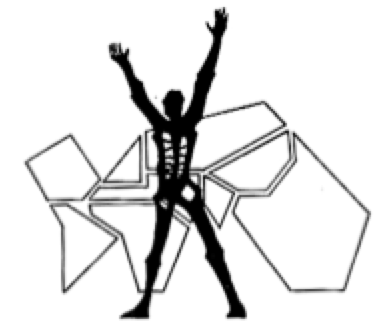High Schools/Universities
Where imaginal education has been applied in high schools and universitiesHigh Schools
With imaginal education courses created and taught since the 1960s, many high school teachers applied image change methods in their classrooms and various programs were created for high school youth. Here are some of those stories.
In 2009 Mary D’Souza began the Aditi Learning Centre in Maharashtra, India as seen in the video on the left that reaches out to rural young women, providing them with a safe and caring environment in which to complete their high-school education. Mary tells about founding the center and the ongoing accomplishments in a paper she wrote in 2020: “Founding and Working with a Learning Centre for Women.” Mary’s article, “Learning to Trust My Dreams” written in Wind and Waves, June 2018, describes Centre’s ongoing success. The Aditi Centre is now addressing climate change through its reforestation program.
Project Learning
OliveAnn Slotta, in Denver, Colorado, 2018
Changing Adolescent Images
During the summer of 1986, a team of four high school teachers- one each from the disciplines of science, social studies, English and mathematics- met with two ICA Imaginal Education facilitators to design an image-based, two year curriculum rotation of lessons and community projects to radically alter the academically struggling, 100 +participating students. This new, school-within-a-school program identified and addressed three unhelpful, negative images, for change:
-
-
-
-
Their image of school as irrelevant and boring (cause–instruction disconnected from experience)
-
The image of community as hostile and dangerous (police/teen-age harassment) and
-
The image of self as a hopeless learner (pattern of failing grades).
-
-
-
Carefully written curriculum changes included a variety of learning styles and modes of presentation, regular interactions with community leaders, and academic interventions. Intentional messages were verbal, visual and experiential. OliveAnn received the Disney Company’s American Teacher Award in 1991 for her work with this Imaginal Education program.
For her Master’s degree, Oliveann wrote The Project Approach to Learning: Documentation of the success of an existential approach in which results were a nearly 100% high school graduation rate, and over 50% college enrollment. In her dissertation titled “Roles and Perceptions of Five Stakeholder Groups in a High School Program that Exemplified Second-Order Change” (University of Colorado, 1999), she wrote about Image-Based Learning.
Student Drama and a Reading Community
Leah Early, in Nevada 2018
As a high school drama and reading teacher, Leah Early created a two-week long Spring One Act Play Festival where every student was an actor during the week. On the last night two comedies were to be played. Her story, “Unlikely Hero” shows how images changed that night, from one student seen as a failure to being seen as a hero and how the student csst shifted their images from possible failure to joyful success.
“Creating a Reading Community” is Leah’s story about how a core of English teachers recreated their images when they realized that only 51% of them were graduating a grade level. Changing their reading strategies over a seven year period, the teachers and the students had new images of success: 87% of the students were reading a college level.
Maharashtra, India
A high school program in Maharashtra was led by Hiraman Kokane and Bhimrao Tupe, who in 1993 wrote “Innovative Approaches to Formal Education in the State of Maharashtra, India” with a case study about their work with Sahydrai High School.
United States of America
In the summer of 2009 Sunny Walker facilitated a six-week “ICA Summer Teen Leadership Program” in Chicago, Illinois, for 100 high school students. Half of the day the students were trained in facilitation methods and the other half they were engaged in environmental projects.
Western Samoa
In 1974 Ann and George Ensinger, Ruth Landmann, Bev Gazarian, and Hana Curts created a manual, “The World We Create: Imaginal Education for Western Samoa”, that documents five years of their teaching in the Methodist High School there.
High Schools
-
Bill Salmon demonstrates imaginal education in Algebra class and for behavior challenged class, 2010
-
In 1990 Jo Nelson wrote “Imaginal Education and Project Based Inquiry.”
-
Youth in Development and Project Report, Vienna, December 1984
-
Towards Effective Education, 1984
-
Student Leadership Development, Reagan High School, Houston, TX, May 1982
-
Intentional College Experiment, Jane St. John, June 1982
-
Student Leadership Course Report, St. Paul Central High, Minneapolis, September 1981-January 1982
-
In 1973 the 18 Year Phase I Journey
-
Youth Roster, December 1972
-
Youth Workshop and Youth Culture, 1970
-
Report on Youth Culture, John. Lloyd, December 1969
-
Youth Proposal for Educating Modern Youth, 1967
-
Educating the Imagination of Youth, Image, Winter 1965
-
High School Religious Studies I Retreat, March 1964
Universities
-
Youth Presidium Report, Phase I Orbiter, 1981
-
Dale Pierce gave a “Statement From the Second Generation” in 1971 at the Order Youth Council.
-
Mark Jewel gave a talk on the “Life of Service” and Sharon Rafos on “The World is Watching” at the 1981 Continental Youth Presidium.
-
Joan Knutson created a two-year English as a second language program, integrating principles of human development and methods of imaginal education at the Bunka Institute of Language, Tokyo, Japan.
-
Mediating Youth Protest, Local Church Experiment
-
Gordon Harper was key to the development and teaching of the University 13 pilot to provide a “liberal arts” education in a thirteen-week residential program. A description of each of the modules can be read here.
-
Model for Revolutionary Mission, EI, June 1965
